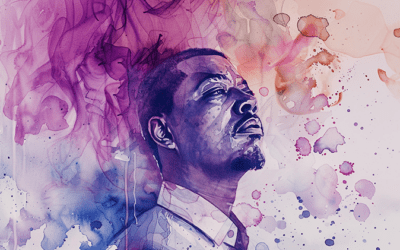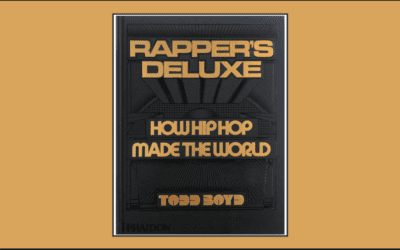In the Beginning: The Rise of Westcoast Hip-Hop
In the grand symphony of music, some rhythms lay the beat, and society follows. One such beat, a pulsating rhythm, is Westcoast hip-hop. The West Coast invented and added to several hip-hop subgenres in the past four decades. And each subgenre painted a vivid sonic portrait of a time, a place, and a people. From Hyphy in the Bay Area to G-Funk in Los Angeles, we will crisscross California in search of gold.
It’s a story that begins with a beat that reverberates from the heart of the West Coast, a beat that has become the signature of an era. This is the story of Westcoast hip-hop, a genre that has etched its indelible mark on the grand tapestry of music history. Its architects, Ice Cube, Too $hort, Ice T, Dr. Dre, and Snoop Dogg, have not just created music. They have created history.
“Hip-hop did not start as a political movement. There was no manifesto. The kids who started it were simply trying to find ways to pass the time, they were trying to have fun. But they grew up under the politics of abandonment and because of this, their pastimes contained the seeds for a kind of mass cultural renewal.”
– Jeff Chang, Can’t Stop, Won’t Stop
Dig even deeper into hip-hop history in our exploration of the history of hip-hop.
Early Roots of Westcoast Hip-Hop
The genesis of Westcoast hip-hop is a tapestry woven with the threads of numerous pioneering artists and DJs who, in the 1980s, laid the groundwork for the genre’s distinctive sound. Among these early trailblazers were the members of Uncle Jamm’s Army and the World Class Wreckin’ Cru, a collective of musicians that included luminaries such as Dr. Dre (a very different version of the visionary producer), The Unknown DJ, Egyptian Lover, Ice-T, and Kid Frost.
Their music, a fusion of beats and rhymes, was the heartbeat of the nascent West Coast hip-hop scene. Check out this Egyptian Lover song to catch the vibe of this nascent movement:
Alonzo Williams, a young DJ hailing from Compton, California, was another key figure in the early days of West Coast hip-hop. Williams began his DJ career in the late 1970s, and his innovative approach to mixing and producing helped to shape the genre’s foundational sound. Like a stone cast into a pond, his influence created ripples that spread far and wide. Williams also managed World Class Wreckin’ Crue.
The 1980s also saw the emergence of several other West Coast rappers who would leave their mark on the genre. Artists like Mellow Man Ace, Too $hort, Kid Frost, Ice-T, and Eazy-E burst onto the scene, each bringing their unique style and perspective to the music. Their voices, raw and unfiltered, became the soundtrack of the West Coast streets.
Rise of Gangsta Rap and N.W.A
As the 1980s dawned, a new chapter in the annals of West Coast hip-hop was being written. From the shadows of the West Coast scene emerged a new breed of rap that was raw, unfiltered, and unapologetically real. This was gangsta rap, a genre that would become the lifeblood of West Coast hip-hop.
At the forefront of this movement was N.W.A, a collective of lyrical revolutionaries who would forever alter the course of the genre. Composed of artists such as Ice Cube, Dr. Dre, Eazy-E, DJ Yella, and MC Ren, N.W.A was more than just a group; they were a force of nature, a seismic shift in the musical landscape.
In 1988, N.W.A released Straight Outta Compton, an album that would become a touchstone in the history of hip-hop. The album was a sonic explosion, a raw and unflinching portrayal of life in the inner city. It was controversial and confrontational, a mirror held up to society, reflecting the harsh realities of urban life.
Straight Outta Compton was more than just music; it was a statement, a declaration of existence from a group of artists who refused to be silenced. The album’s themes of police brutality, racial profiling, and urban decay resonated with audiences, particularly those who had experienced these realities firsthand.
The rise of gangsta rap and the impact of N.W.A marked a pivotal moment in the evolution of West Coast hip-hop. It was a period of intense creativity and cultural upheaval, a time when the genre was not just reflecting society but actively challenging it. The legacy of this era continues to reverberate through today’s music, a testament to the enduring power and relevance of the genre.
G-Funk Era and West Coast Dominance
As the 1990s dawned, the West Coast hip-hop scene was on the cusp of a new era. The raw intensity of gangsta rap began to meld with the smooth, laid-back beats of funk, giving birth to a new subgenre: G-funk. This sound was as intoxicating as it was innovative, a sonic blend defining the West Coast sound in the 1990s.
At the helm of this musical revolution were Dr. Dre and Snoop Dogg, two artists who would become synonymous with the G-funk sound. Dr. Dre, a former member of N.W.A, was a master craftsman and producer who could weave intricate beats and melodic hooks together to create complex and catchy tracks. With his distinctive drawl and laid-back delivery, Snoop Dogg was the perfect complement to Dre’s production, his verses flowing seamlessly over the G-funk beats. Watch the music video for their first collaboration:
The early 1990s were a golden age for West Coast hip-hop, a period of creative flourishing that saw the genre reach new heights of popularity and acclaim. Artists like Warren G and Tha Dogg Pound added their unique voices to the mix, their contributions further enriching the G-funk sound.
The G-funk era was more than just a period of musical innovation; it was a time of West Coast dominance in hip-hop. The music resonated with audiences far beyond the West Coast, its influence permeating the global hip-hop landscape. The tracks crafted during this era were not just songs but anthems that captured the spirit of a time and place, the essence of the West Coast experience.
The legacy of the G-funk era continues to reverberate through today’s music, its influence evident in the work of contemporary artists. It was a period that showcased the creative potential of West Coast hip-hop, a testament to the genre’s capacity for evolution and reinvention. The G-funk era was not just a chapter in the history of West Coast hip-hop; it was a turning point that forever changed the course of the genre.
Bay Area Hip-Hop Scene: A Vibrant Tapestry
In the grand narrative of Westcoast hip-hop, a parallel story was woven in the Bay Area. As G-funk made waves, a vibrant and eclectic scene blossomed in the Golden State’s northern part. Artists such as Too Short, E-40, and Mac Dre were not just participants in this scene; they were its architects, infusing West Coast hip-hop with the distinctive flavor of the Bay Area.
Too Short, with his unflinching narratives of life on the streets of Oakland, painted a vivid portrait of the city’s underbelly. E-40, a wordsmith known for his unique vernacular and innovative flow, brought a fresh and distinctive voice to the genre. Mac Dre, with his infectious energy and charismatic persona, embodied the spirit of the Bay Area.
Explore the Bay Area sound deeper in A Guide to Hyphy.
The Bay Area hip-hop scene was a kaleidoscope of sounds and styles, reflecting the region’s cultural diversity. The music pulsated with the energy and vibrancy of the Bay Area, its sound as diverse and dynamic as the community from which it emerged.
One of the defining features of the Bay Area sound was the influence of hyphy music. Characterized by its frenetic beats and wild energy, hyphy was more than just a subgenre; it was a cultural movement celebrating the Bay Area’s unique spirit and identity. The influence of hyphy songs added a new dimension to the West Coast sound, further diversifying the genre’s sonic landscape.
The Bay Area hip-hop scene was a testament to the region’s creative vitality and cultural diversity. It was a scene unafraid to push boundaries, challenge conventions, and carve its path. The artists of the Bay Area did not just contribute to West Coast hip-hop; they redefined it, infusing it with a unique flavor only found on classic Hyphy albums.
East Coast-West Coast Rivalry and its Impact: A Dark Chapter
The mid-1990s were not a time of celebration but a period marked by a bitter feud that cast a long, dark shadow over the hip-hop genre. The rivalry between the East and West Coast scenes was more than just a competition; it was a conflict fueled by personal vendettas, regional pride, and a media that fanned the flames of discord.
This battle was not fought with beats and rhymes but with words that cut deeper than any knife. The feud was a specter that loomed over the genre, a dark cloud that threatened to eclipse the vibrant creativity of the hip-hop scene.
Tupac Shakur and The Notorious B.I.G. are at the heart of this conflict between two of the era’s most influential artists. Their tragic deaths marked a turning point for West Coast hip-hop, signaling the end of an era. The music, once a source of joy and expression, had become a harbinger of tragedy.
The fallout from the rivalry led to a period of decline and introspection for West Coast hip-hop. Once a beacon of innovation and creativity, the genre was now grappling with the harsh realities of its own success. The music continued, but the tone had changed. The beats were still there, but they were now underscored by a sense of loss and regret.
Yet, even in the face of adversity, West Coast hip-hop refused to be silenced. The genre, like the artists who defined it, was resilient. It weathered the storm, emerging from the turmoil of the mid-1990s with a renewed sense of purpose and a determination to continue pushing the boundaries of music.
Westcoast Hip-Hop Revival and Modern Era
In the aftermath of the tumultuous 1990s, Westcoast hip-hop found itself at a crossroads. Yet, like a phoenix rising from the ashes, the genre experienced a resurgence in the late 2000s. This was not a return to the past, but a rebirth, a new chapter in the ongoing saga of West Coast hip-hop.
Emerging from this revival were new voices, artists ready to carry the torch of West Coast hip-hop into a new era. Among these were Kendrick Lamar, Schoolboy Q, and Odd Future, artists who breathed fresh life into the genre. Their music was a fusion of old and new, blending traditional West Coast sounds with contemporary influences.
The sound of West Coast hip-hop evolved during this period, incorporating elements of other genres like trap and R&B. Yet, despite these new influences, the music remained unmistakably West Coast. It was a sound rooted in the genre’s rich history, yet unafraid to push boundaries and explore new sonic landscapes.
This revival period was a testament to the resilience and adaptability of West Coast hip-hop. It was a reminder that the genre, like the artists who define it, is not defined by its past but by its ability to evolve and reinvent itself. The West Coast sound, once again, was not just a part of the hip-hop landscape; it was shaping it, pushing the genre into new and uncharted territory.
The Beat Goes On: The Resilience and Revival of Westcoast Hip-Hop
In the grand narrative of music, West Coast hip-hop is a testament to the power of creativity, the resilience of culture, and the enduring allure of authenticity. From its early roots to its modern manifestations, it has been a genre that has not just reflected the times but has shaped them. It has been a voice for the voiceless, a platform for expression, and a beacon of cultural identity. It has been a genre that has not just created music but has created history.
As we look back on the journey of West Coast hip-hop, we see not just the evolution of a genre but the evolution of a culture, a people, and a society. And as the beat goes on, we can only wait in anticipation for the next chapter in this enduring saga. In the end, West Coast hip-hop is not just about the music. It’s about the message, the movement, and, most importantly, the people.


